How ‘The Menu’ Cooked Up Its Wild Meal and Trendy Restaurant With Help From Chef Dominique Crenn
- Oops!Something went wrong.Please try again later.
- Oops!Something went wrong.Please try again later.
- Oops!Something went wrong.Please try again later.
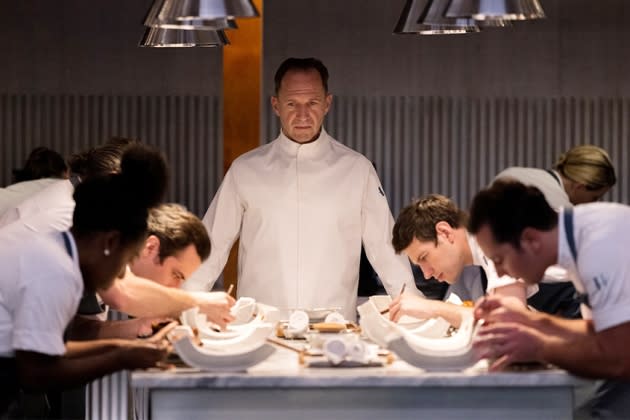
“The Menu” is one of the rare movies, along with classics like “Big Night” and “Babette’s Feast,” that revolves almost completely around a singular meal. But unlike those odes to pleasure, “The Menu” starts out as a deluxe culinary experience for the 1%, but then devolves into something much darker — and far less appetizing. Ralph Fiennes stars as the renowned Chef Slowik, whose relentless pursuit of the perfect experience threatens to drive him to madness. Anya Taylor-Joy is an unexpected dinner guest at Hawthorn, the $ 1250-a-head-restaurant situated on a lonely island, while Nicholas Hoult is her chef-worshipping foodie date and Hong Chau is the exacting maître d’.
With the entire film revolving around one momentous meal, consulting chef Dominque Crenn, production designer Ethan Tobman and the culinary team played just as important a role in bringing the film to life as the cast members. Director Mark Mylod, who helmed numerous “Succession” episodes, has plenty of experience in skewering the rich, but needed some restaurant pros to execute the script’s vision of a luxurious evening gone awry.
More from Variety
'The Menu' Cast on Being 'Teased' by Prop Food and Why Audiences Love Watching the Ultra-Rich Suffer
Mylod brought in Crenn as chief technical consultant to help conceptualize the menu based on Seth Reiss and Will Tracy’s acerbic screenplay, which is full of insidery digs.
Spot-on satirical touches include the laser-engraved tortillas, a technique actually used in restaurants that becomes much more ominous at Hawthorn, where the tortillas reveal dark secrets from the diners’ lives. Then there’s the “Breadless Bread Plate” which is just savory emulsions, with no actual bread for the overprivileged diners.
Crenn, who has been featured on “Chef’s Table,” is the creator of Atelier Crenn, the San Francisco tasting menu restaurant where dishes are sometimes evoked, rather than described, with lines of poetry like “by the shimmer of white pearls, tumbling in the ashen cloud.”
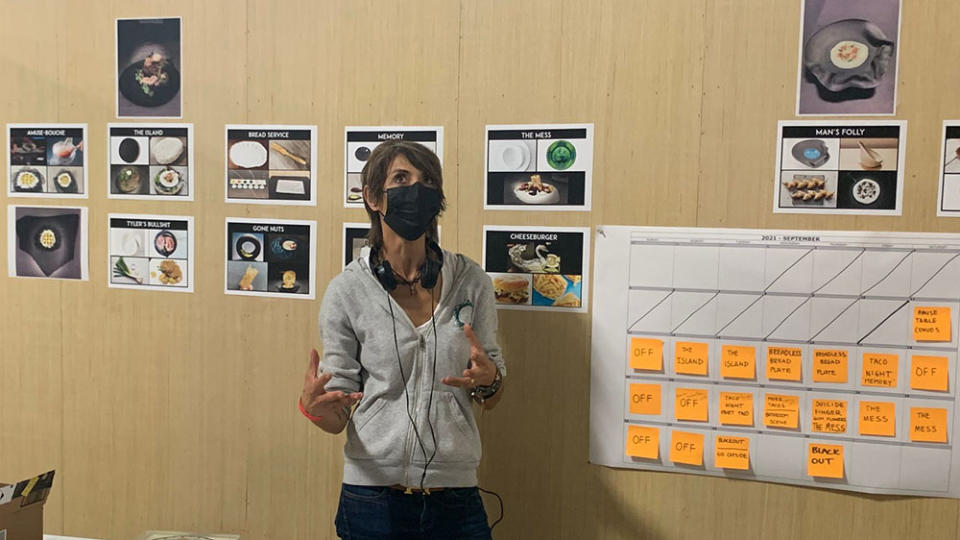
Her style isn’t as intense as Fiennes’ character, but she certainly relates to that kind of singular focus. “I mean, I’m not as crazy as he is, but I understood the pressure,” she says.
It was easy for her to imagine how challenges including snobby critics and thoughtless photo-snappers could end up driving a chef over the edge. “It’s kind of a bully type of thing because the pressure in the kitchen is so high — mentally you can get really affected and then you lose it,” says Crenn, pointing out the high rates of alcohol and drug abuse in restaurant kitchens.
Tobman, who was the production designer for “Pam & Tommy” and “Black Is King,” worked in kitchens as he was getting his start in the film business. “I’ve always said that if I didn’t work in film I would work in the culinary industry,” he says, “It’s like kind of full circle that I finally got to do something in film that gave back to the world where I first got to experience that discipline and rigor.”
Hawthorn’s austere style is clearly influenced by restaurants like Noma in Copenhagen, where Tobman once spent a memorable Christmas Eve, hanging out with the staff for 12 hours on the night before it closed for a lengthy break. “The staff was rather rowdy that night,” he remembers. “I learned so much about their techniques and I thought if I could ever do a film that captured this environment, it would be the greatest gift.”
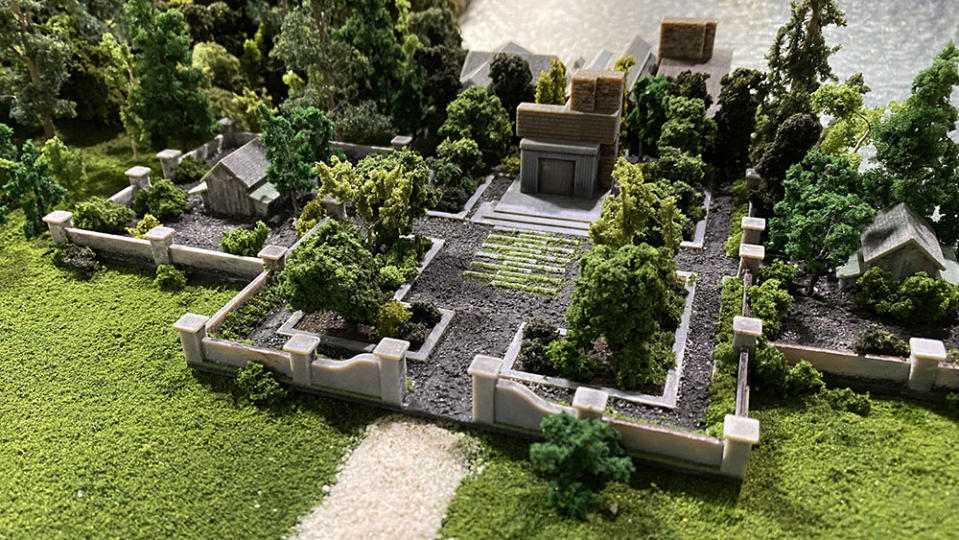
When the team made lists of which chefs they thought would be right to consult on the film, Crenn was on everyone’s list, Tobman says. “We all said, ‘she’s never going to say yes.’ We were kind of shocked with she took the meeting.”
Crenn is “rather fearless,” Tobman says. “She’s impulsive and she’s truly an artist first and foremost and that’s what we were looking for.”
To help define the look of the food preparation scenes, Tobman started by showing Mylod the anguished paintings of Francis Bacon and Dutch Old Masters paintings with vivid still lives of distorted dead pheasants and foxes.
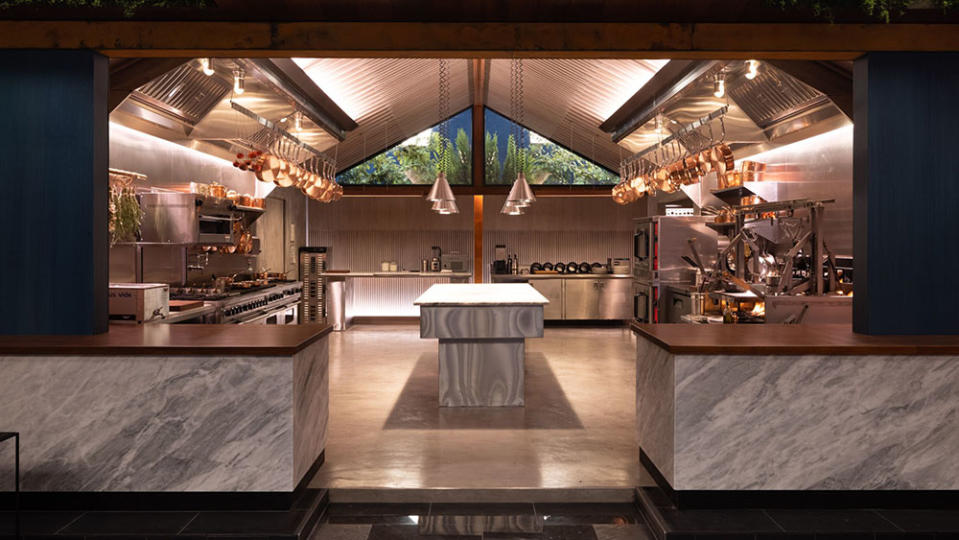
Tobman wanted it to feel like Fiennes was an almost priestlike figure presiding over the lavish open kitchen, where the window beams form a cross behind him. “I wanted the kitchen to feel ecclesiastical,” he says. “I wanted him to feel like he was preaching from a pulpit.”
Meanwhile, property master Luci Leary was working with Tobman to create vessels to hold the food that look like they’re made from materials harvested on the island. It was food stylist Kendall Gensler’s job to make sure all the plates still looked fresh after a day of shooting under hot lights. Tobman says that at first there was tension between Gensler’s need to keep the food looking perfect and Crenn’s desire to make sure it was realistic and in most cases, completely edible. “Then they just started dancing together, and soon it was working really seamlessly, where one camp would innovate the dish and the film camp would figure out how to translate that into a workable material that could survive the filmmaking,” Tobman says.
“Mark knew he wanted the restaurant to be harvested from the island’s ecosystem,” Tobman says. “He liked the idea that the chef is inspired by the perfection of nature.”
Dishes like “The Island” with raw diver scallop and seaweed look the same as what you might find on the menu at Atelier Crenn, but as the meal progresses, the food gets less appetizing and more extreme, with courses like “The Mess” of roasted filet and bone marrow.
The final course of s’mores, Tobman says, was the toughest course to execute.
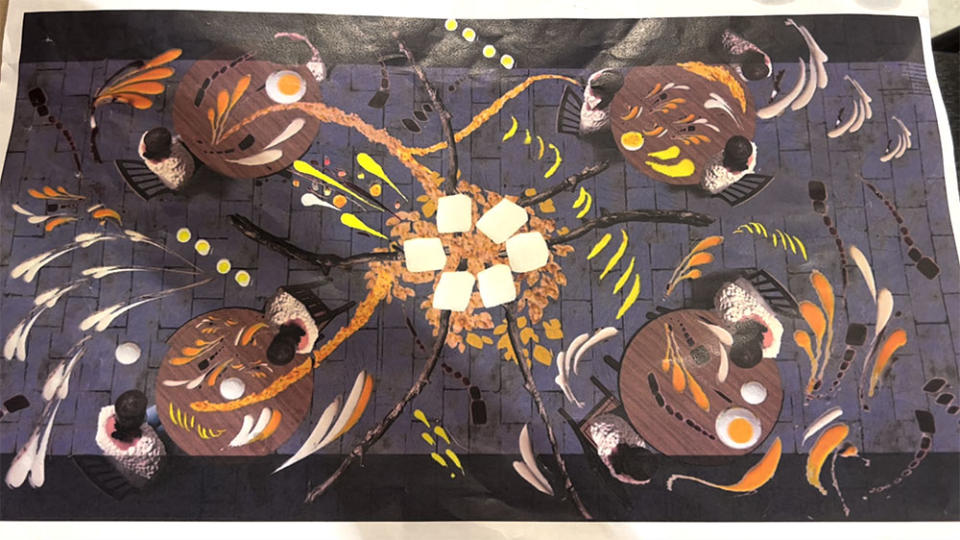
But this dessert isn’t on a plate – it covers a 30 ft. by 60 ft. room, with random brush strokes meant to look like chocolate and marshmallow. “We experimented with powdered pigments and resins that would solidify paint on one stage and on the other stage we threw out chocolate, orange blossoms and vanilla. We traced them with black light markers and then went on to the stage and used the markers to put our plastic versions of the food in, and I don’t think you see the difference,” Tobman says.
Hawthorn restaurant might not be real, but it won’t be the end of Crenn and Tobman’s collaboration. Crenn has invited the movie production designer to create a new look for Atelier Crenn in San Francisco.
“It’s nice to partner with someone that can see things outside of the box to bring something new to this world,” Crenn says.
Best of Variety
Sign up for Variety’s Newsletter. For the latest news, follow us on Facebook, Twitter, and Instagram.

